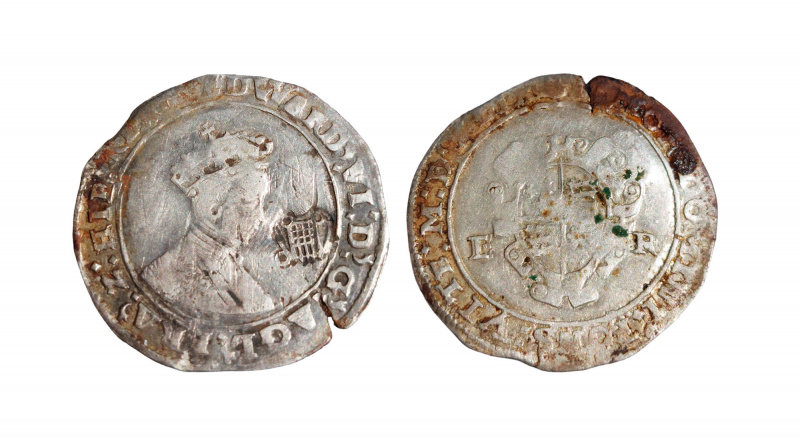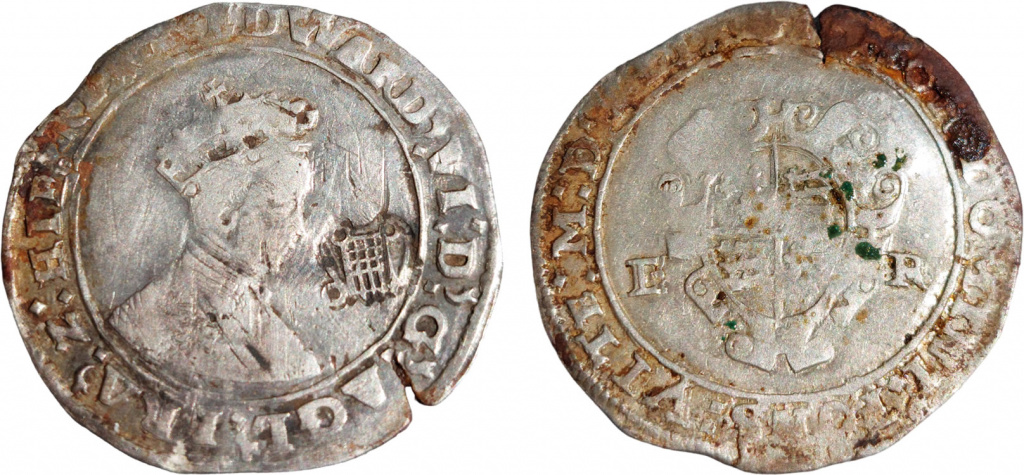PAS Finds (w/e 14/06/24) – Edward VI shilling with portcullis
My selection of the detecting finds recorded at the PAS during the week ended 14 June 2024.
Featured Find
Edward VI shilling with portcullis counterstamp
A base silver shilling of Edward VI with a portcullis counterstamp on the obverse. The portcullis was added in the reign of Elizabeth I to revalue the coin to four pence.
Henry VIII – Debasement
Towards the end of Henry VIII’s reign, England found itself in financial difficulty. This had been caused by excessive spending on Henry’s lavish lifestyle and wars with France and Scotland. Henry had already sold off some of the Crown’s land and raised taxes but more money was still needed.
In May 1542, Henry ordered that the amount of silver and gold in the coinage be reduced and the previously unpopular Testoon be produced again. These were held in storage for two years until the lack of bullion prompted their release into circulation.
Between 1544 and 1551, the silver content of coins dropped numerous times. By 1551 it was only 25%; the previous fine silver content was 92.5%. It is estimated that this generated a profit of £1.27 million for the Crown.1
The debasement of the coinage caused discontent and confusion amongst the population.
Edward VI – Return to fine silver
The advisers to Edward VI understood how the reputation of the coinage and the crown were inextricably linked. The king’s face on the coins was a guarantee of their worth. They sort to manage public opinion with a series of proclamations. Between 1542 and 1547, at the end of Henry’s reign, there had only been one proclamation related to the coinage. Between 1548 and 1565 there were 36.2
However, in the early year’s of Edward’s reign, the desperate state of the country’s finances dictated that coinage continued to be debased. His first issue continued to use the image of his father, Henry VIII. These included Testoons.
His second issue was in his own name and reverted to a profile image of the king. The Testoon was renamed as the Shilling. It was produced in two different weights and standards, which caused further confusion amongst the populace.

In 1551, Edward’s third issue returned to the fine silver standard of 92.5%.
In preparation for this, a declaration was issued to reduce the value of the previous shillings to nine pence and then to sixpence.
Elizabeth I – Currency reforms
When Elizabeth was crowned in 1558, she made reform of the currency one of her top priorities. As well as the issue of prolific counterfeiting the circulation of debased coins was still a problem. The worst affected coins were shillings because some were worse than others.

It was decided that the “worse” type should be valued at 2¼ and the “better” at 4½ pence.
In September 1560 a proclamation, with images, was issued to enable people to identify which was which. However, this relied on the details on the coin being identifiable, in particular the mint mark. Also, some of the information in the proclamation was technically incorrect.
This all served to create more confusion and so the government decided that all shillings would be countermarked to show their current value; the “worse” ones with a greyhound and the “better” ones with a portcullis.
Because of the widespread distrust of mints and mint officials, it was decided that the stamping should be carried out in public. Stamping irons were sent out to the mayors of towns throughout the country. Along with a goldsmith, who would determine which type of shilling it was and stamp the coin, they would sit in an “open place” and countermark shillings.
References
- The debasement of the coinage, 1542-1551, C. E Challis, 1967
- Currency, conversation, and control: political discourse and the coinage in mid-Tudor England. Jennifer Bishop, 2016


